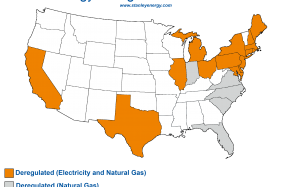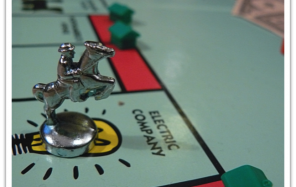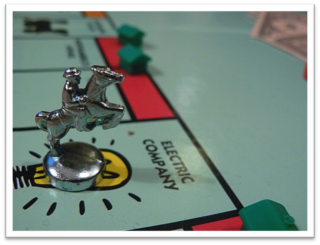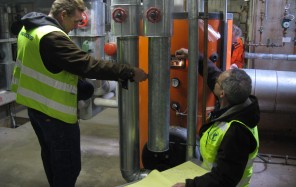Map of Energy Deregulated States in the U.S.

Vivamus vel sem at sapien interdum pretium. Sed porttitor, odio in blandit ornare, arcu risus pulvinar ante, a gravida augue justo sagittis ante. Sed mattis consectetur metus quis rutrum. Phasellus ultrices nisi a orci dignissim nec rutrum turpis semper.


 Business owners and property managers are under constant business pressure to improve tenant services, make their buildings more “Energy Efficient” and accomplish all of this while reducing operating expenses year-over-year. For these reasons (and others), they are always looking for ways to save energy.
Business owners and property managers are under constant business pressure to improve tenant services, make their buildings more “Energy Efficient” and accomplish all of this while reducing operating expenses year-over-year. For these reasons (and others), they are always looking for ways to save energy.
These “opposing” objectives bring to light the business challenges faced by business owners each and every day. They are too busy to focus on energy efficiency with so many other things interrupting their daily activities. When the Utility bills arrive, they just pay them and move on, as they are keenly aware of the impact on operating costs.
Business owners have a general understanding of how much the utilities cost each month but they are not necessarily aware of how those costs convert into consumption of kilowatts, kilowatt hours, Therms, gallons or cubic feet.
For example, this baseline tracking brings to light why the electricity usage might be high on a weekend when:
The path to reducing energy expenses is best served by using energy management software as a service to establish a baseline energy consumption profile. This easily tracks and monitors the costs of energy and the volume of kwHours and natural gas therms consumed by buildings, and begins to analyze why certain things are happening.
For business owners and property managers to begin saving money on their energy bills, they should consider these and other methods to pay less for energy as well as use less energy.

 The high level concept of energy deregulation is defined as when government reduces its role and allows industry greater freedom in how it operates. Similar to deregulation in other industries like telecommunication and transportation, energy deregulation involves the purchase of electricity and natural gas through a competitive market. In a regulated market, commercial, industrial and residential users of electricity and natural gas are forced to buy energy through the utility without competition.
The high level concept of energy deregulation is defined as when government reduces its role and allows industry greater freedom in how it operates. Similar to deregulation in other industries like telecommunication and transportation, energy deregulation involves the purchase of electricity and natural gas through a competitive market. In a regulated market, commercial, industrial and residential users of electricity and natural gas are forced to buy energy through the utility without competition.
The lack of competition in the market increases the cost to the end user because the utility can charge any rate it can justify to the regulatory authorities and the suppliers are not forced to compete for the business. Deregulated markets promote competition between suppliers because it permits customers to choose the lowest cost supplier with the most advantageous contract terms. Many would argue that deregulation lowers costs for the end user and has stimulated suppliers to create advantageous product offerings for consumers.
Electricity and natural gas bills contain charges and rates for demand and supply. The demand or distribution charge is paid to the entity, typically the local regulated utility, who owns the lines and/or pipes that distribute the electricity or natural gas to customers. The demand charge is regulated by a Public Utility Commission and the delivery is guaranteed by law. A common question from first time procurement customers is “Could I lose access to electricity and natural gas by switching to a competitive supply contract?” The resounding answer to this question is: “NO”. You do not risk losing access to electricity and natural gas because you choose to take advantage of deregulation. The transmission and delivery is guaranteed by the PUC and the local utility that owns the transmission lines and/or pipes.
Customers can save by taking advantage of deregulation because it allows supply firms to compete for your business and aggregate usage with other customers creating economies of scale and lower pricing. The typical supply charge savings ranges from 5-20% on average compared to purchasing supply through the utility (owner of the lines/pipes). Many factors can impact the savings including the contract length, natural gas, oil and other commodity pricing fluctuations, the float provided for in your supply contract, and various outside influences that can negatively or positively affect commodities markets.

Building energy audits can be performed on commercial and industrial buildings to assess the amount of energy currently being used and assist in prioritizing and implementing energy-efficiency projects. Energy audits use a variety of techniques to evaluate energy efficiency and identify potential efficiency improvements to lower utility bills and increase comfort. Energy Star rating is just one method of establishing a comparative baseline of the energy usage of a building. Energy audits will assist building owners and property managers in identifying ways to help lower operating costs and create a more competitive position for their building in the real estate market.
Energy audits can be obtained at no cost to the building owner and at a minimum should include a review of the building envelope and building operations.
Typical energy audit reports will include similar recommendations in the following areas:
Higher efficiency lighting in room areas, especially to replace incandescent bulbs
Contact your local energy broker to provide a list of all available energy rebates and tax incentives.
No comments by admin yet.
